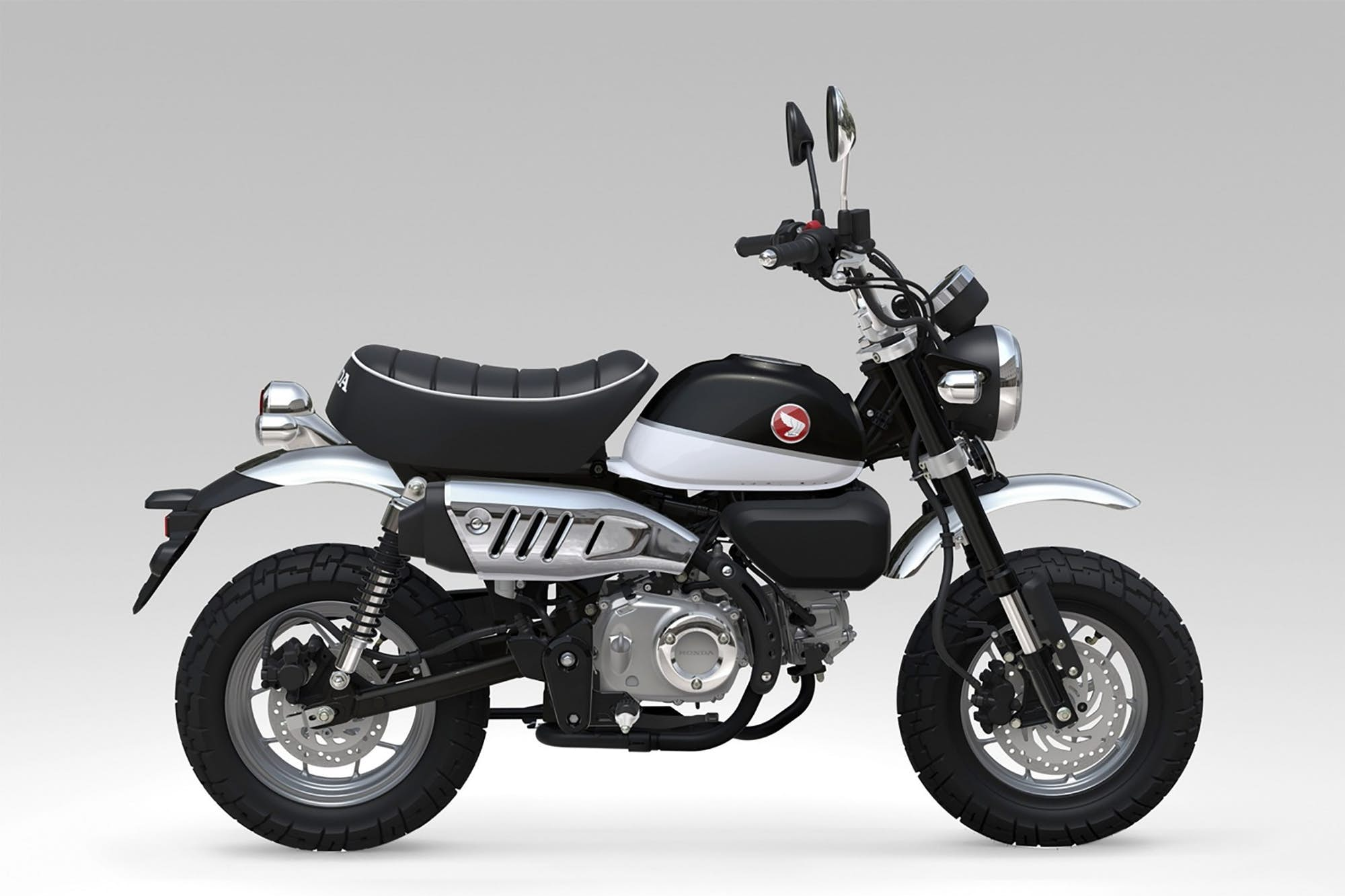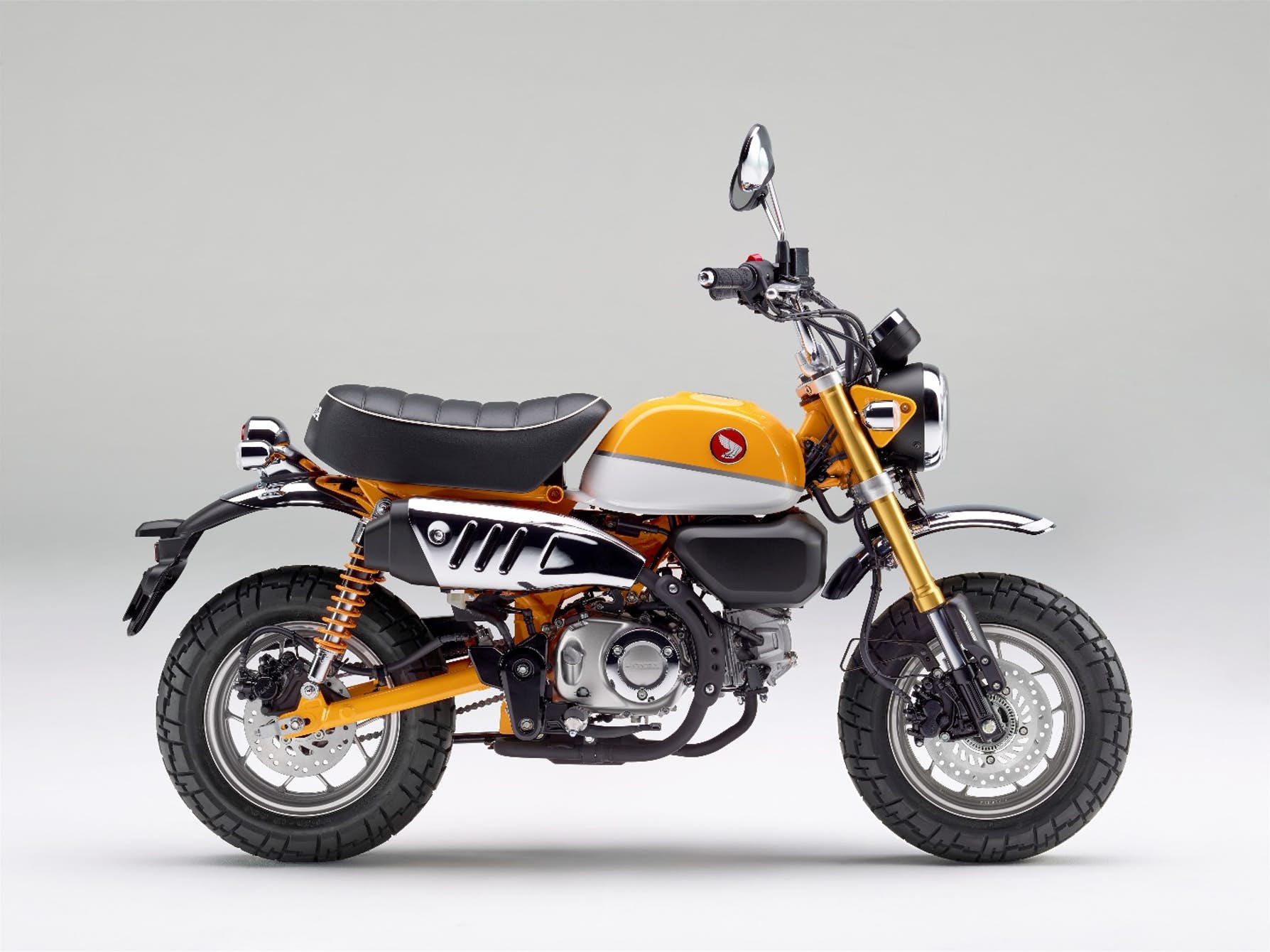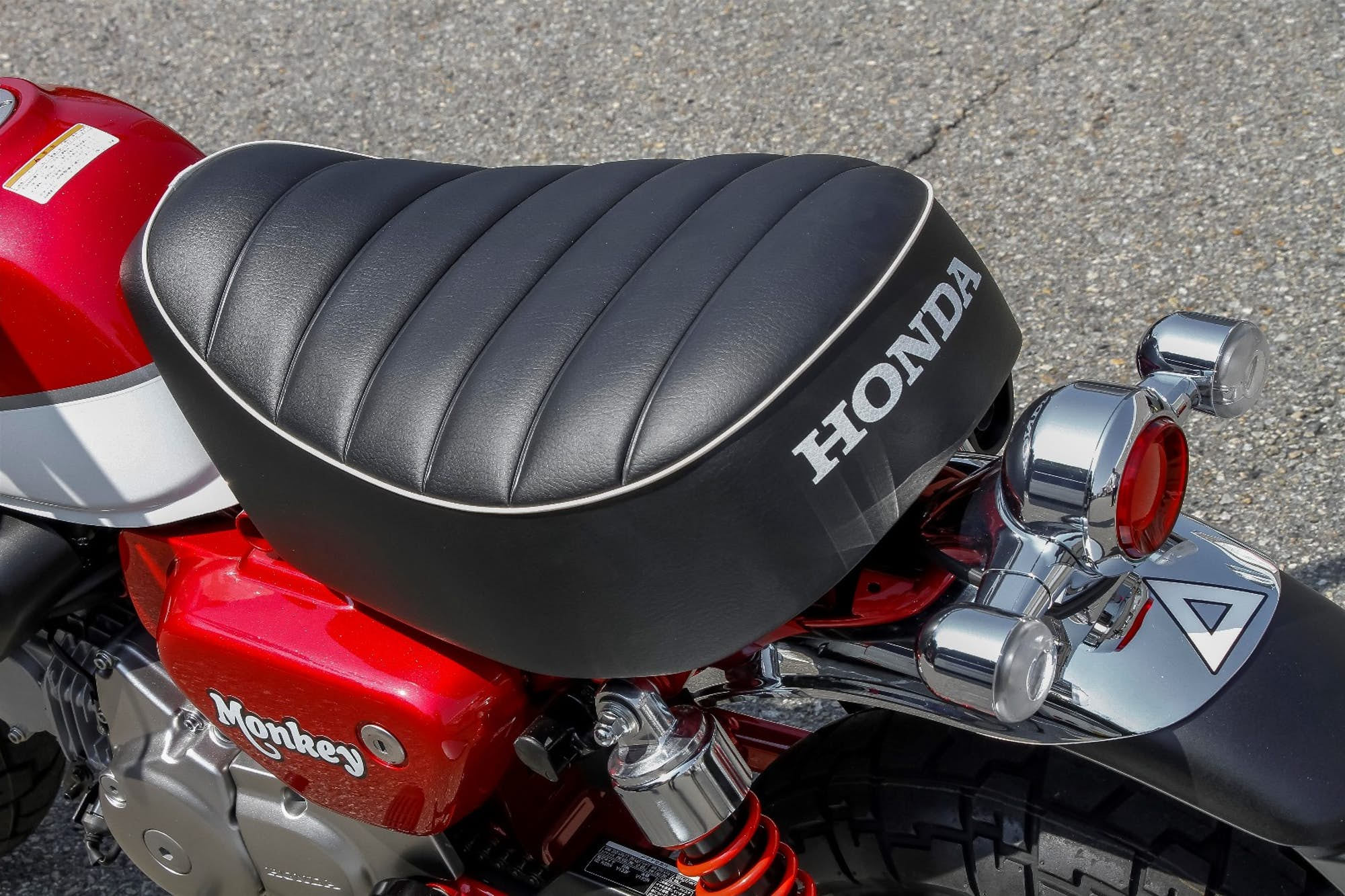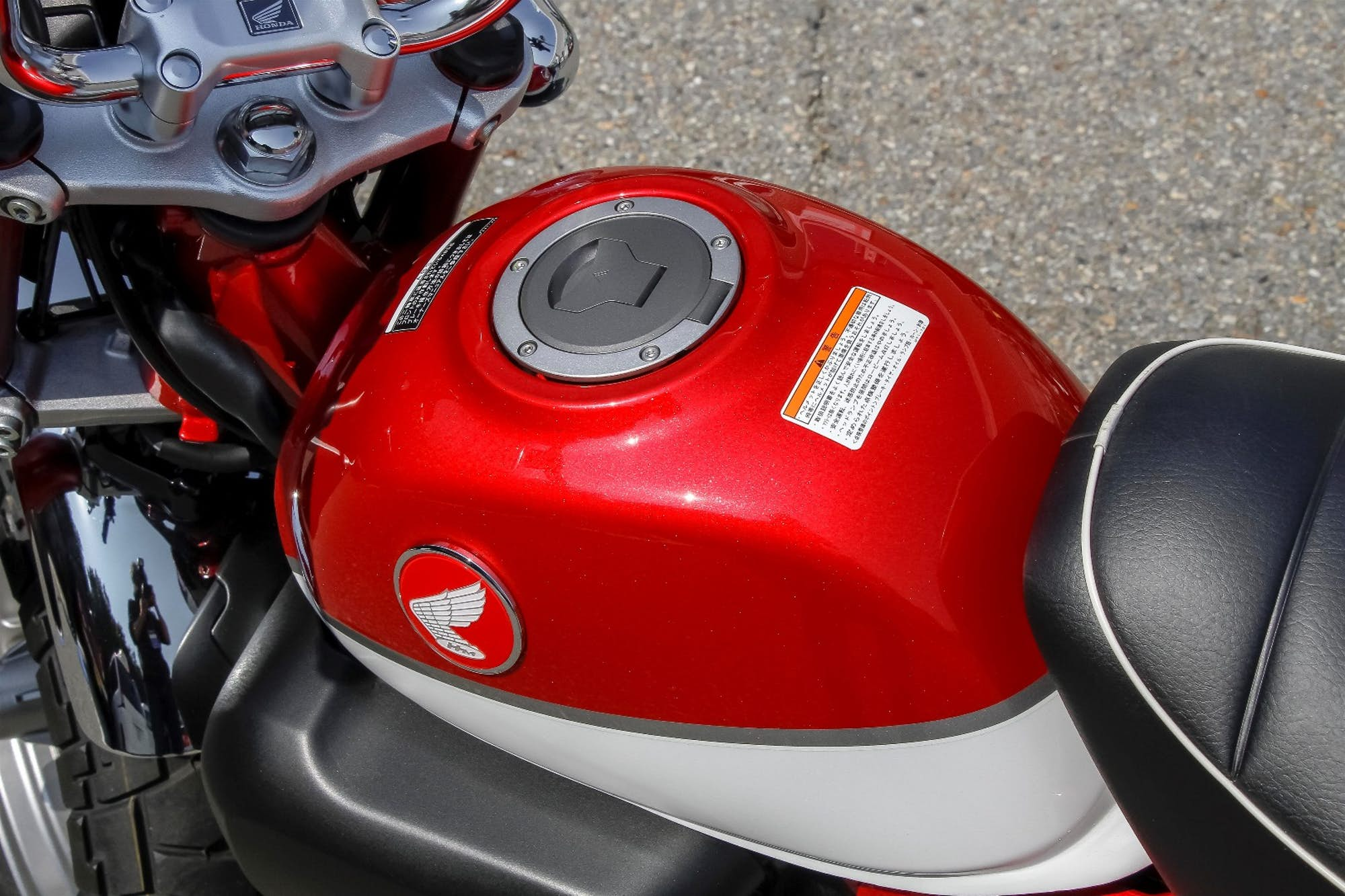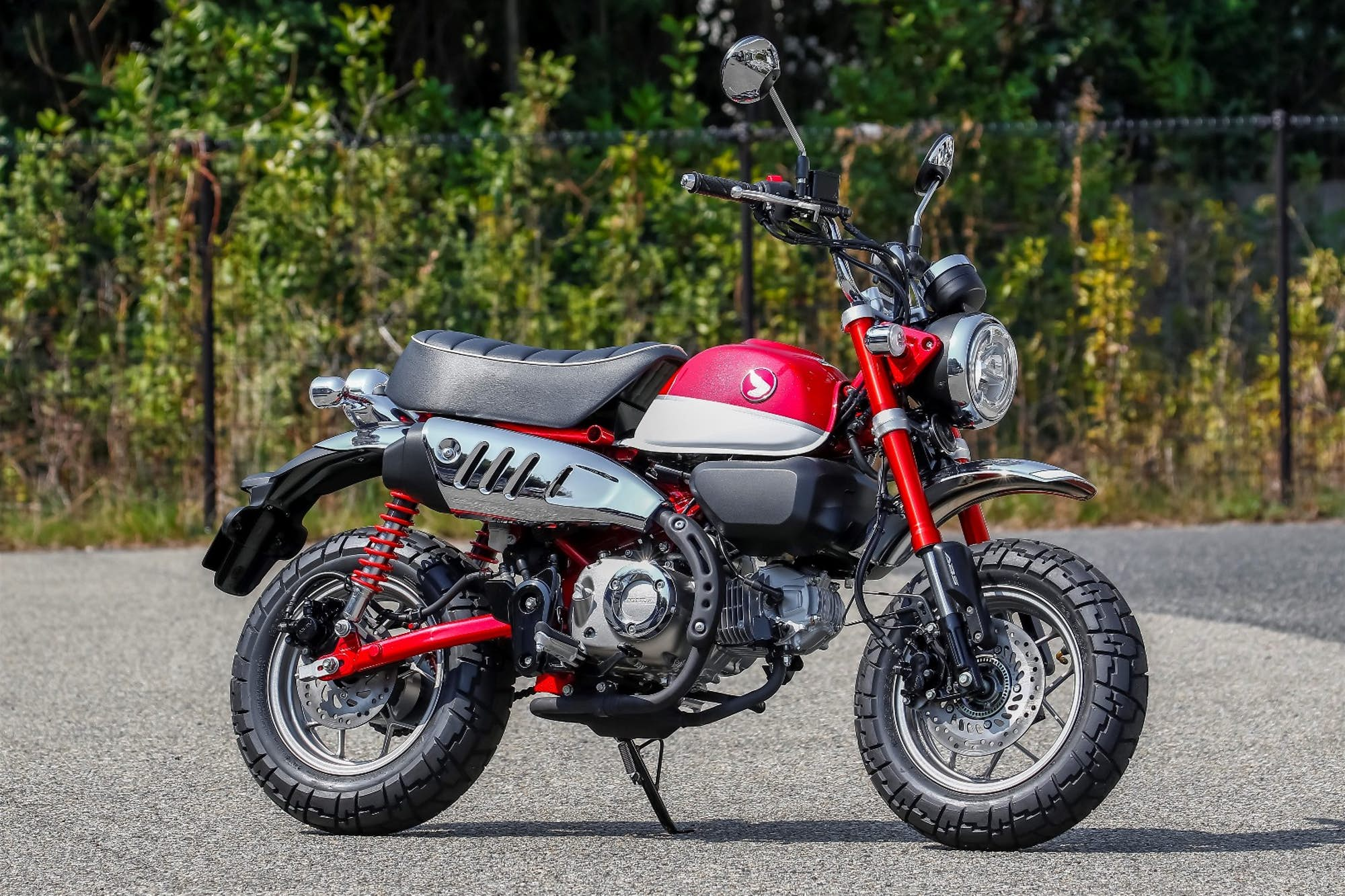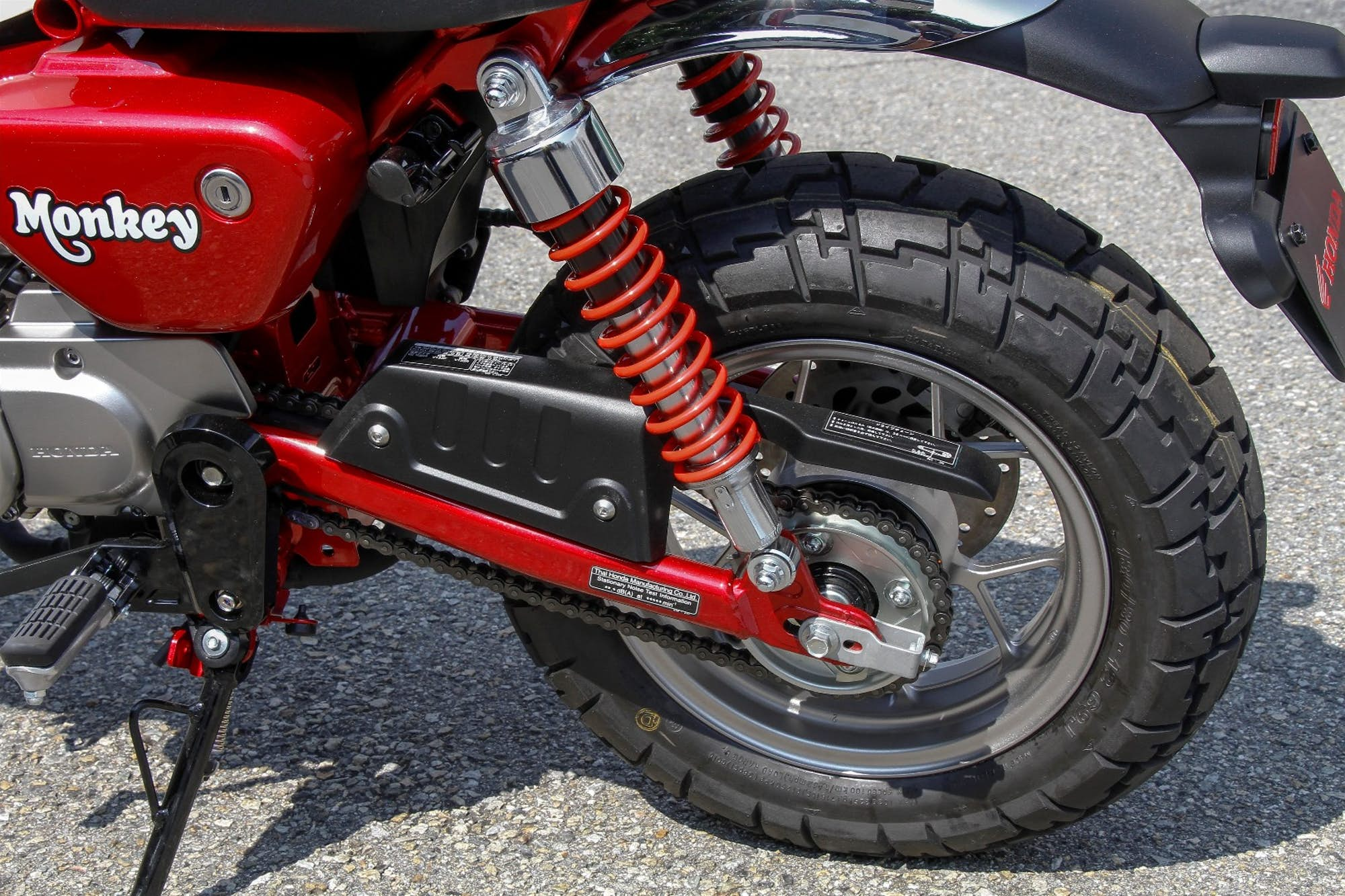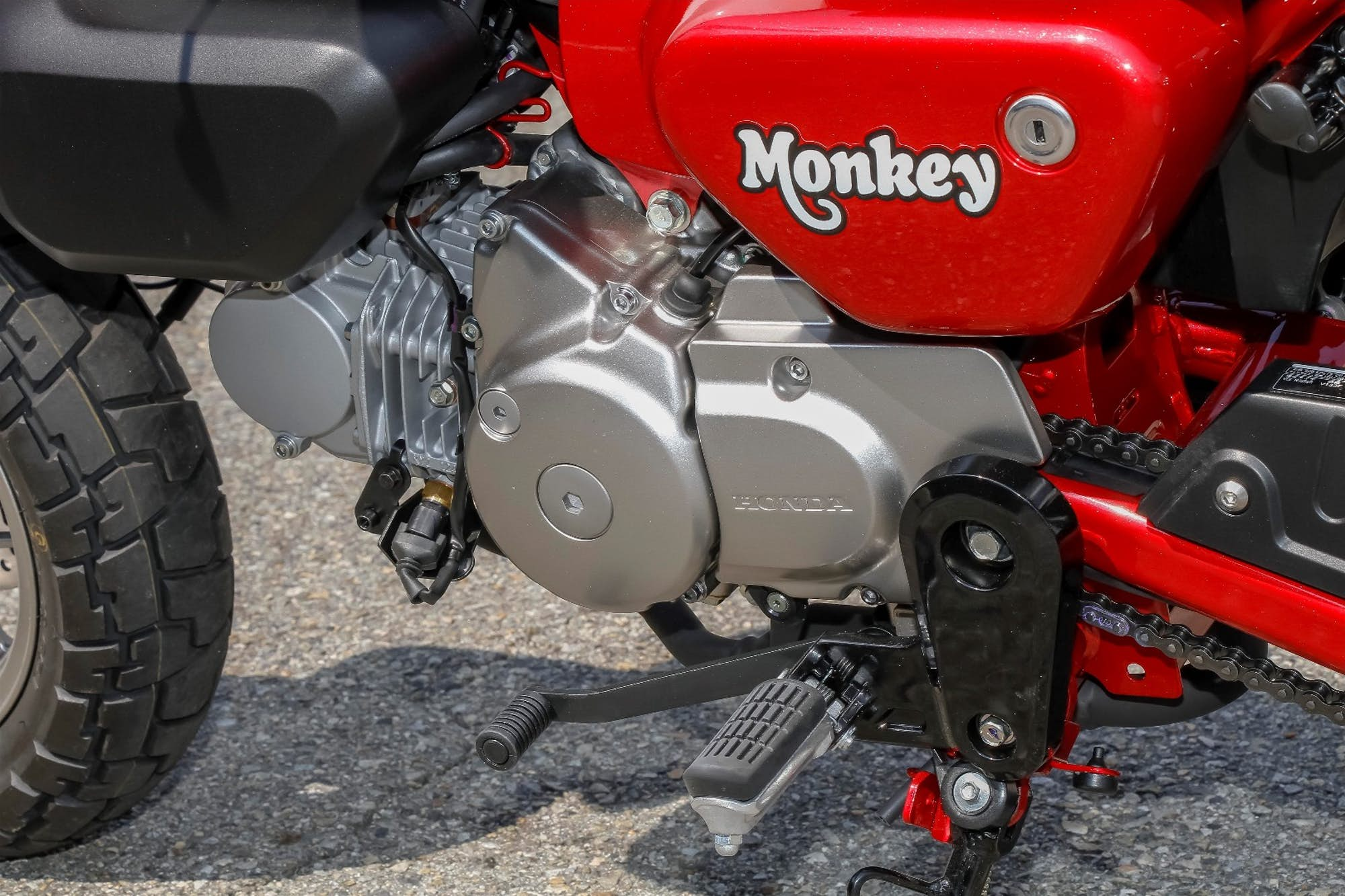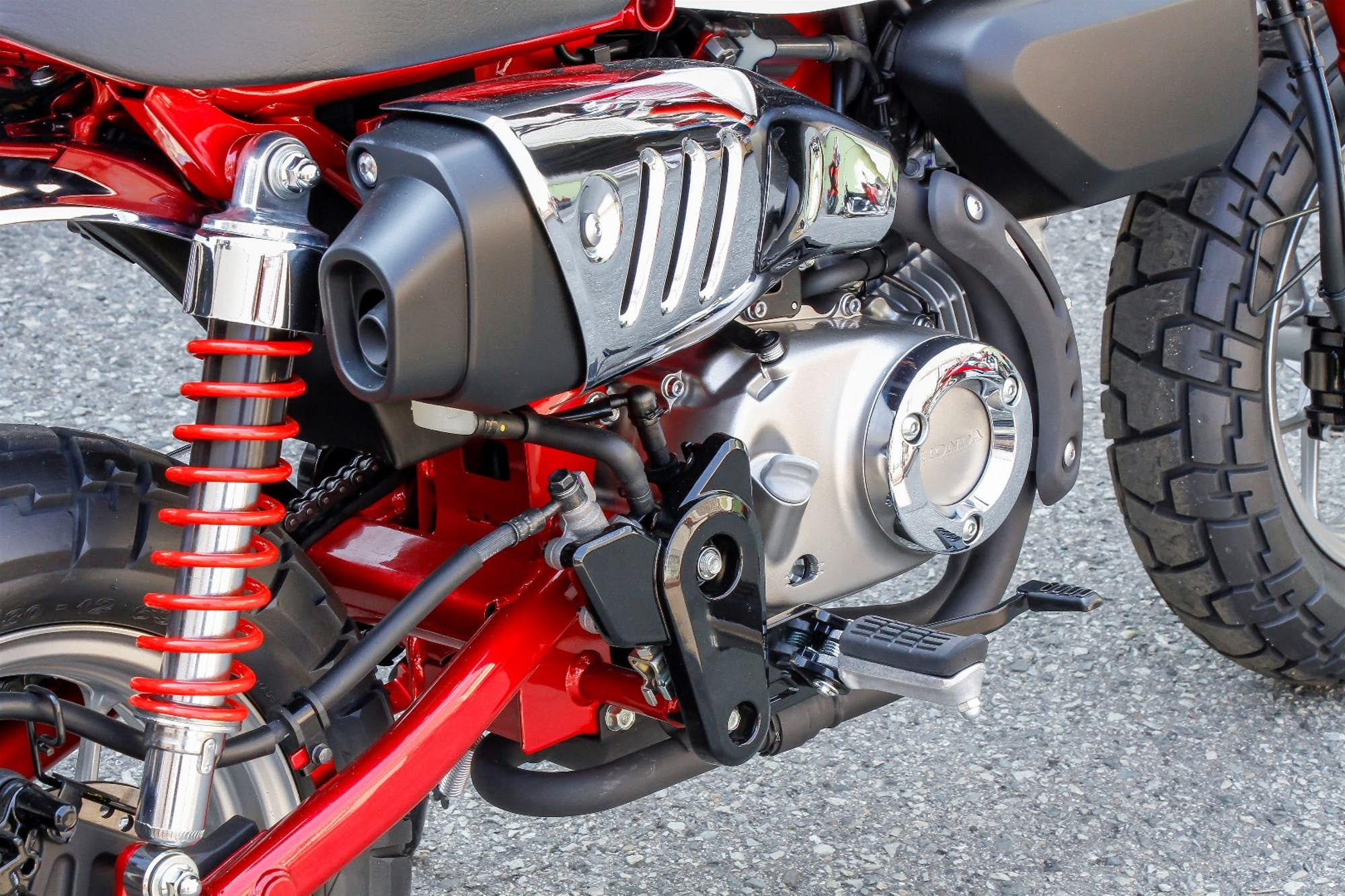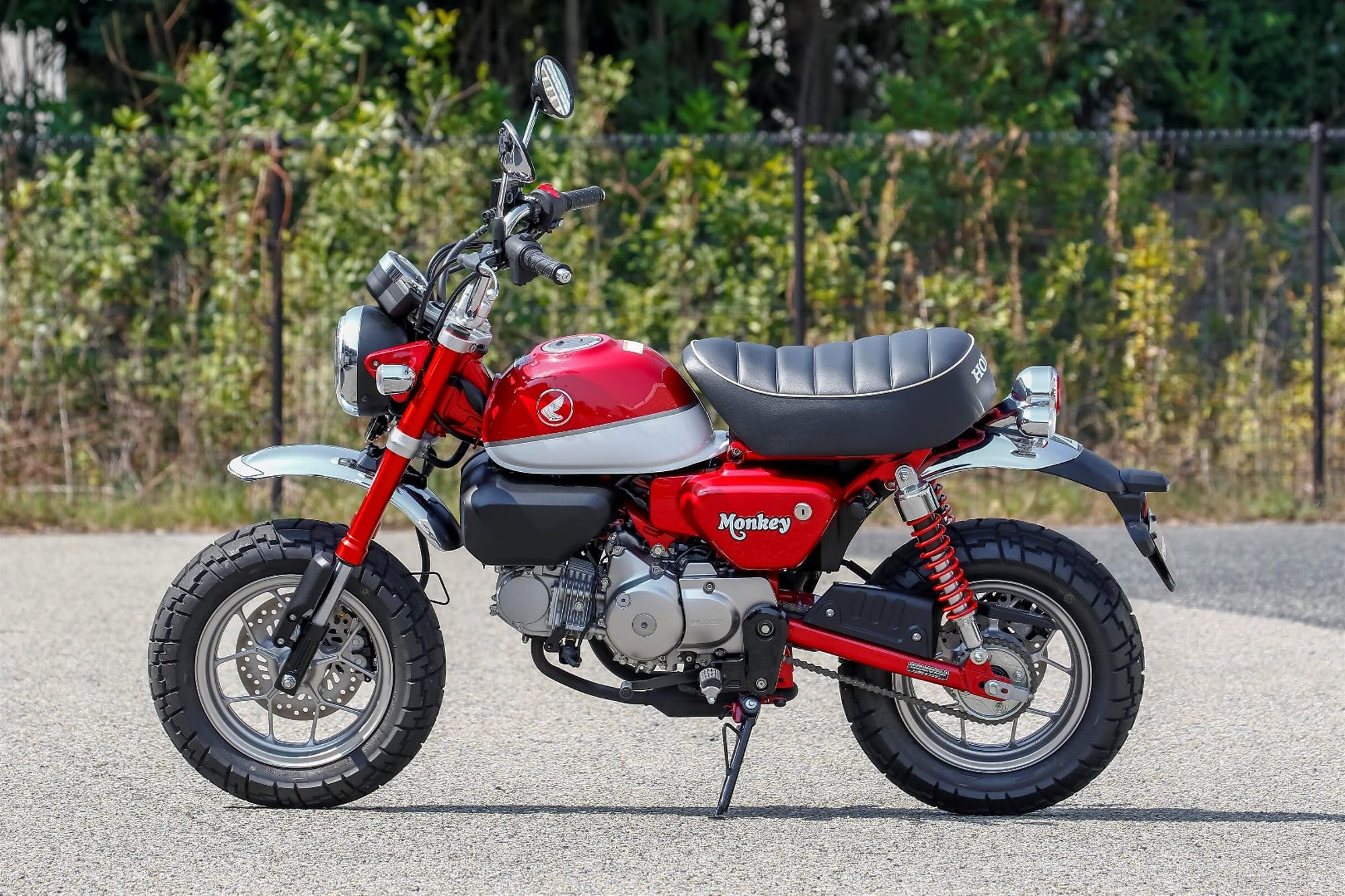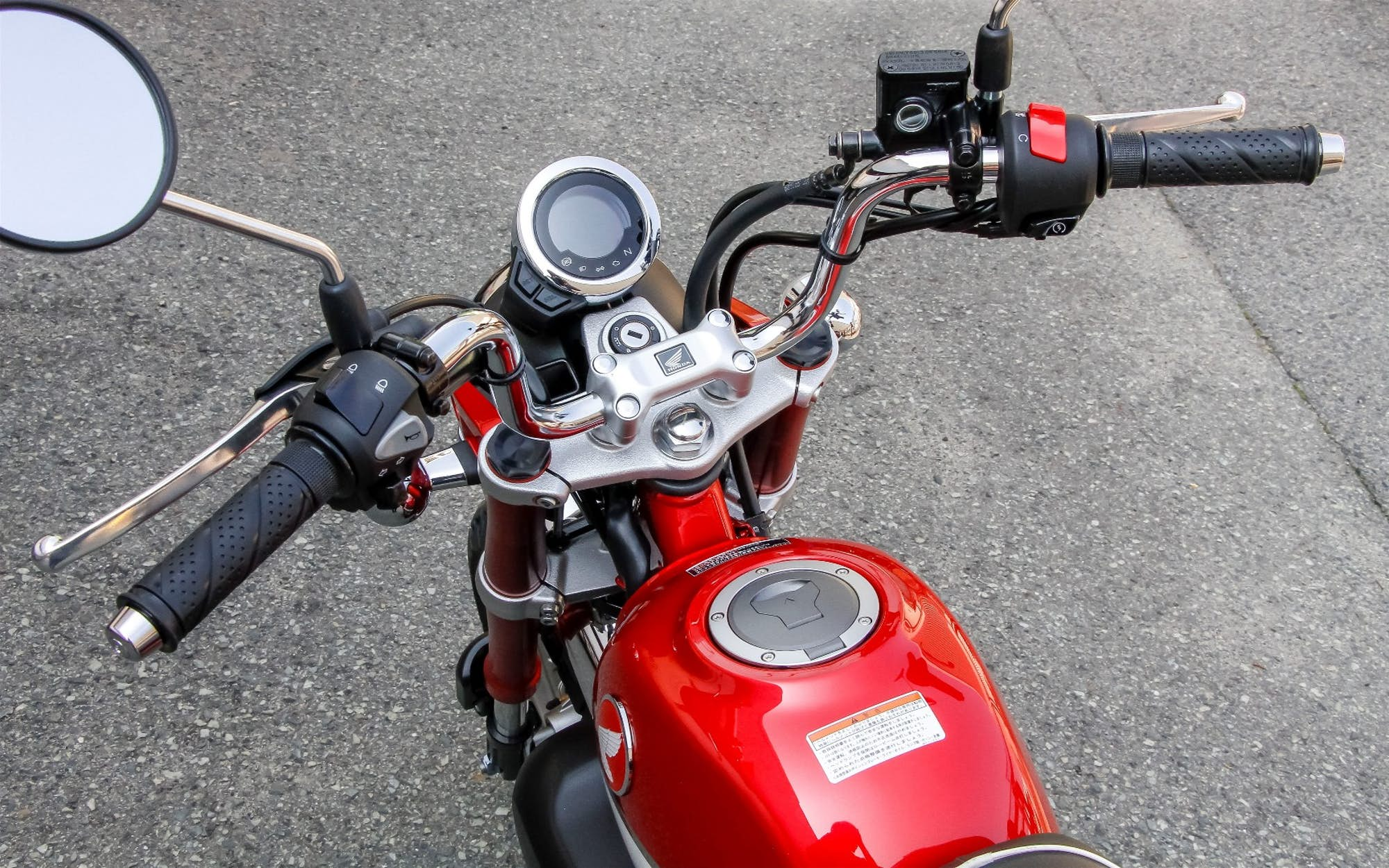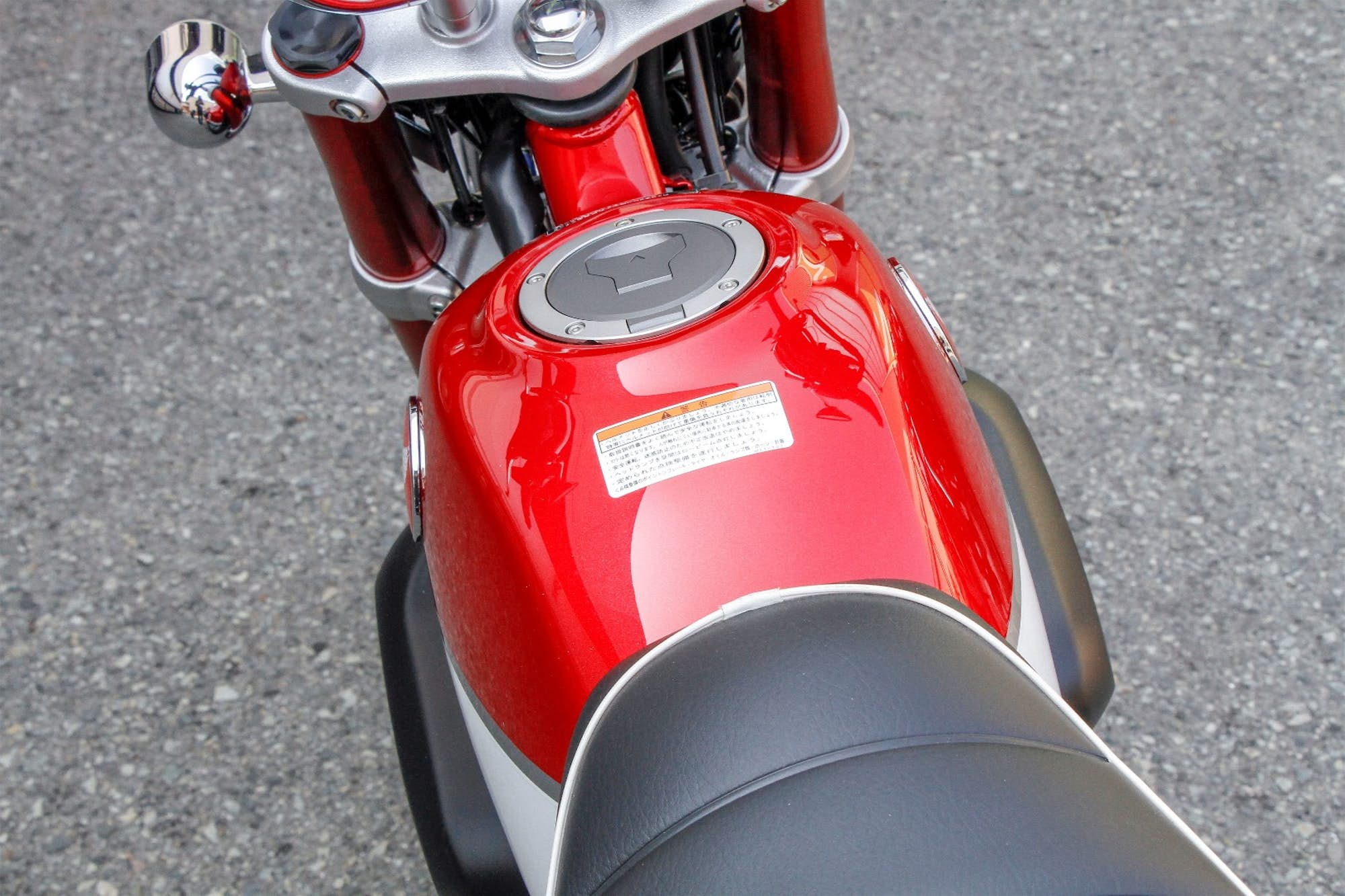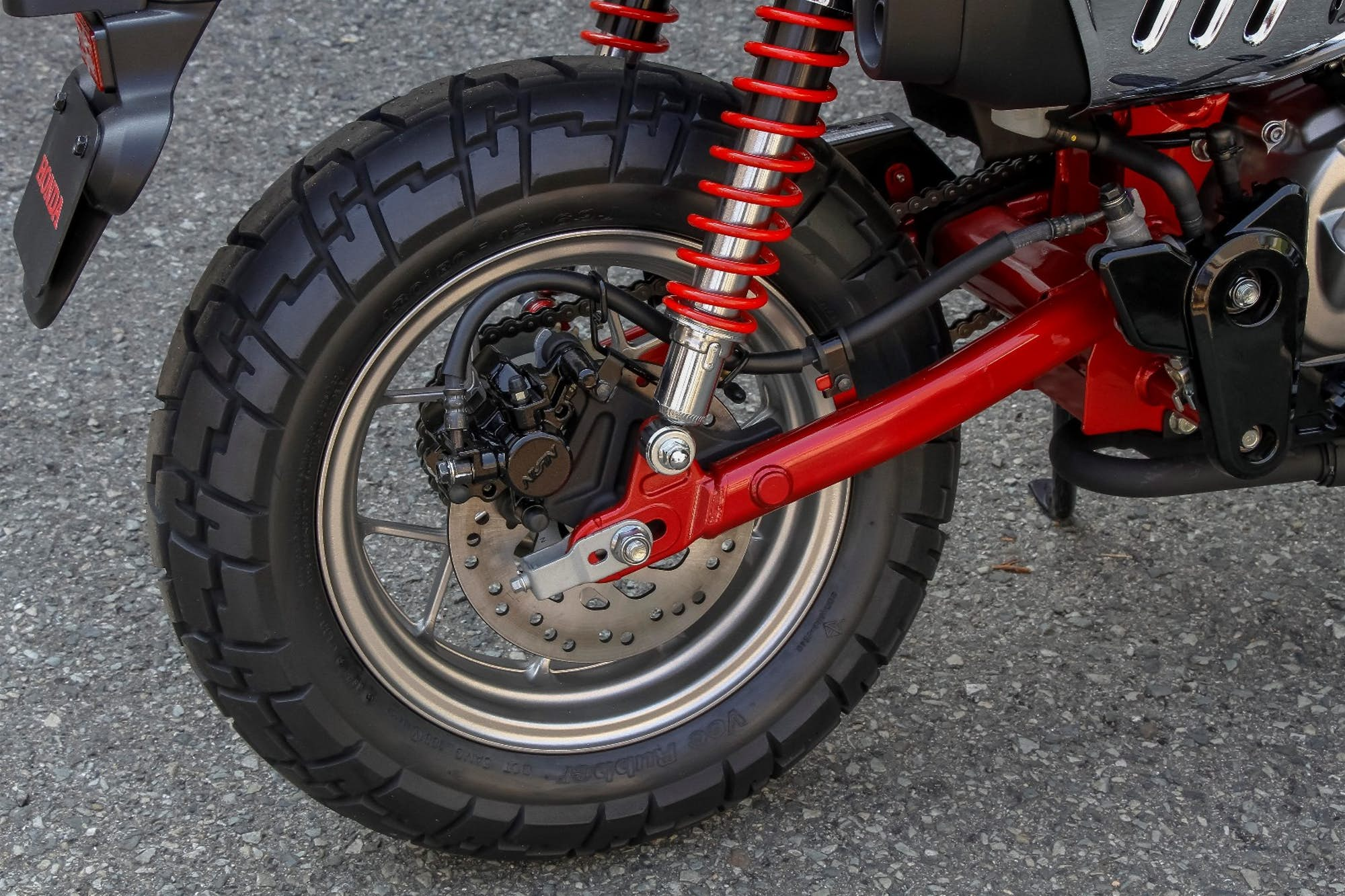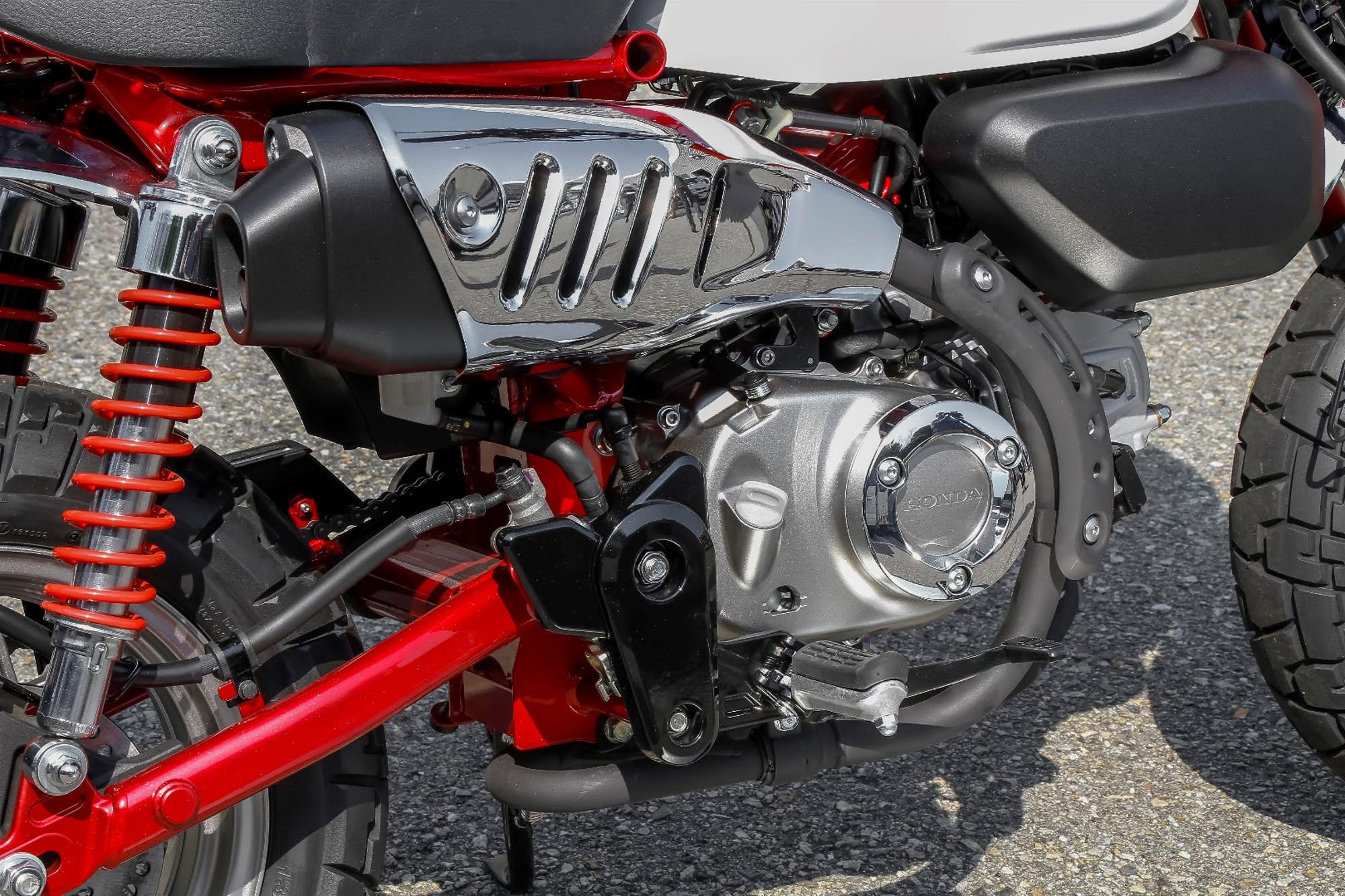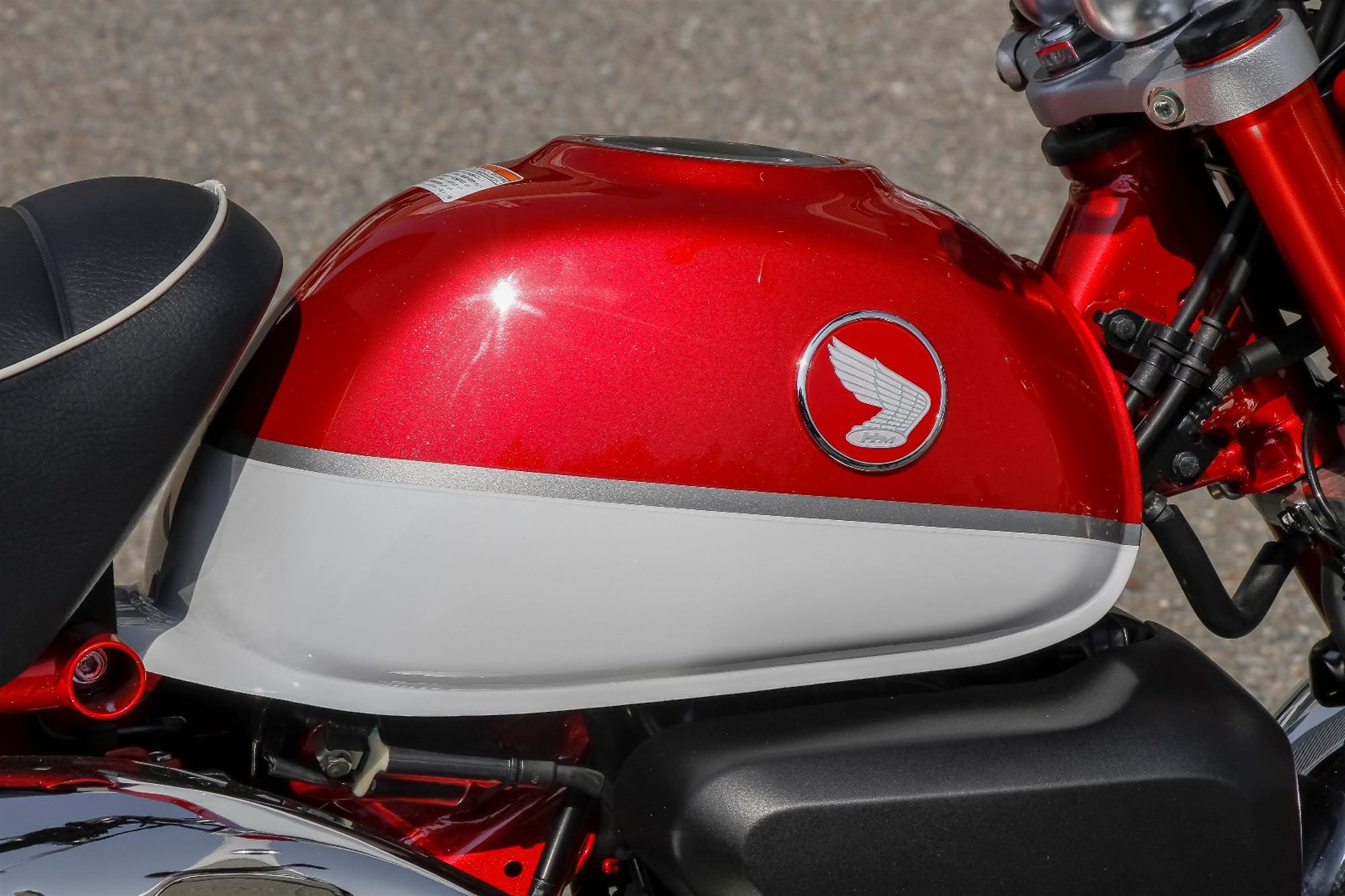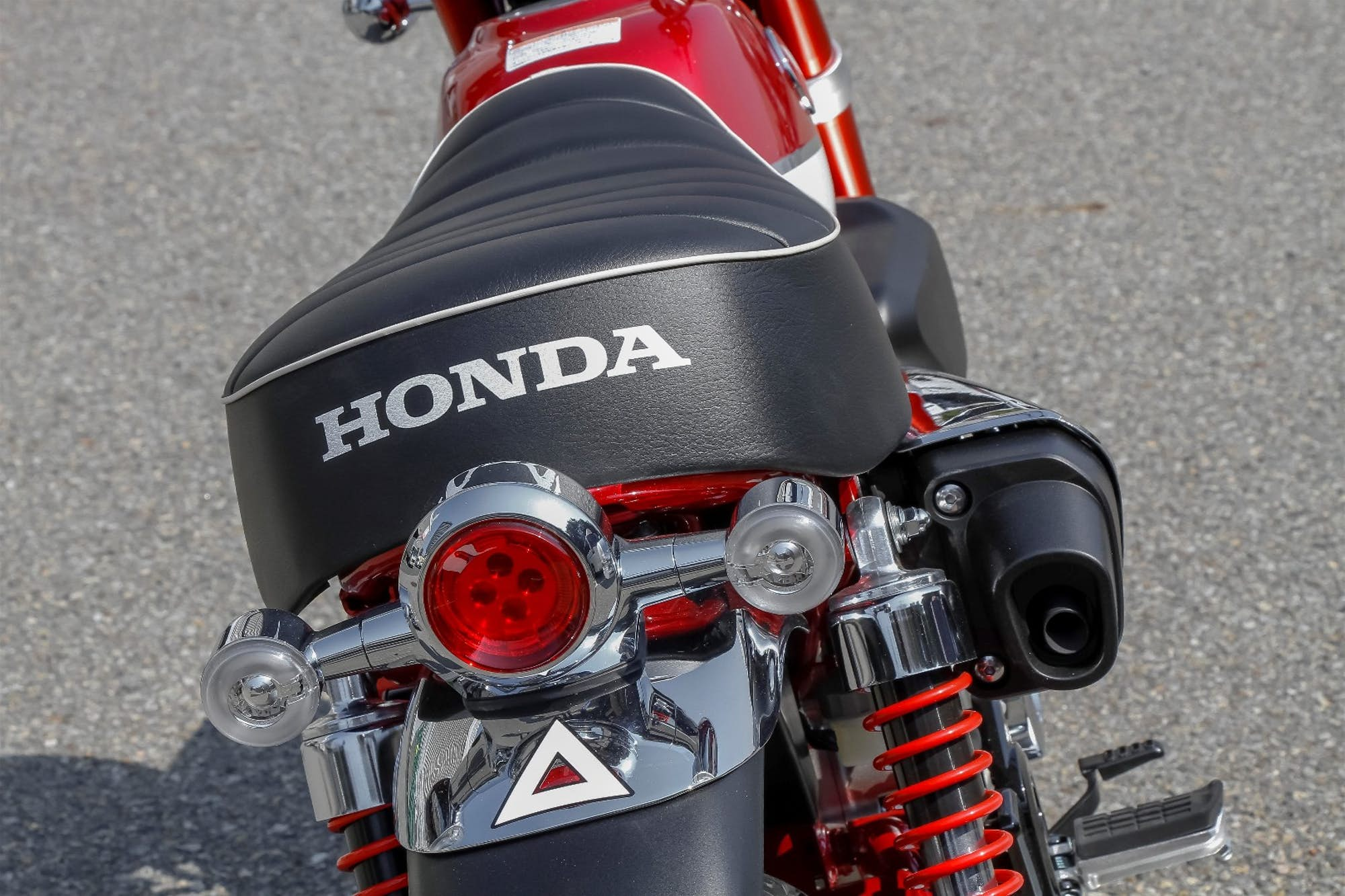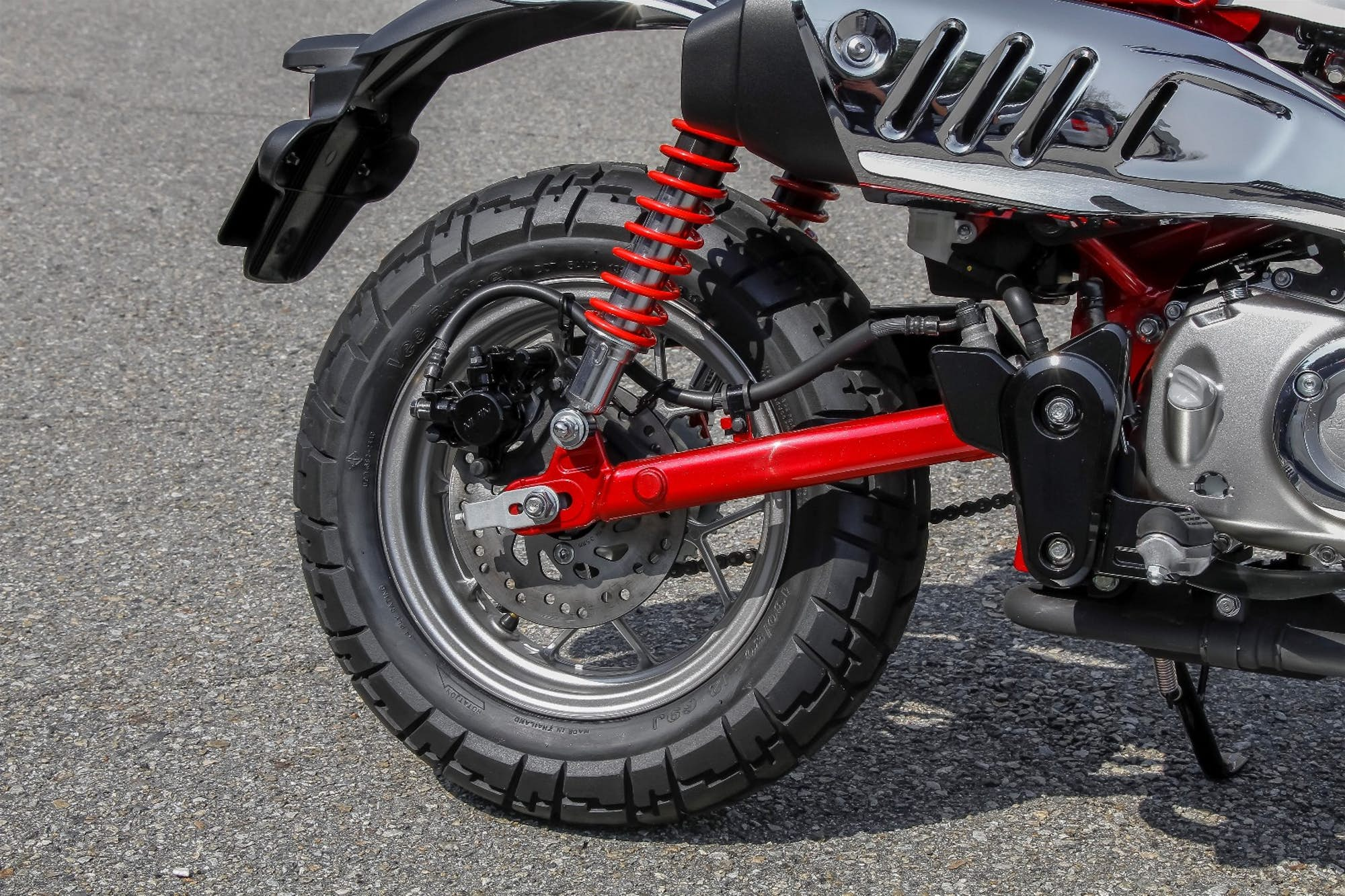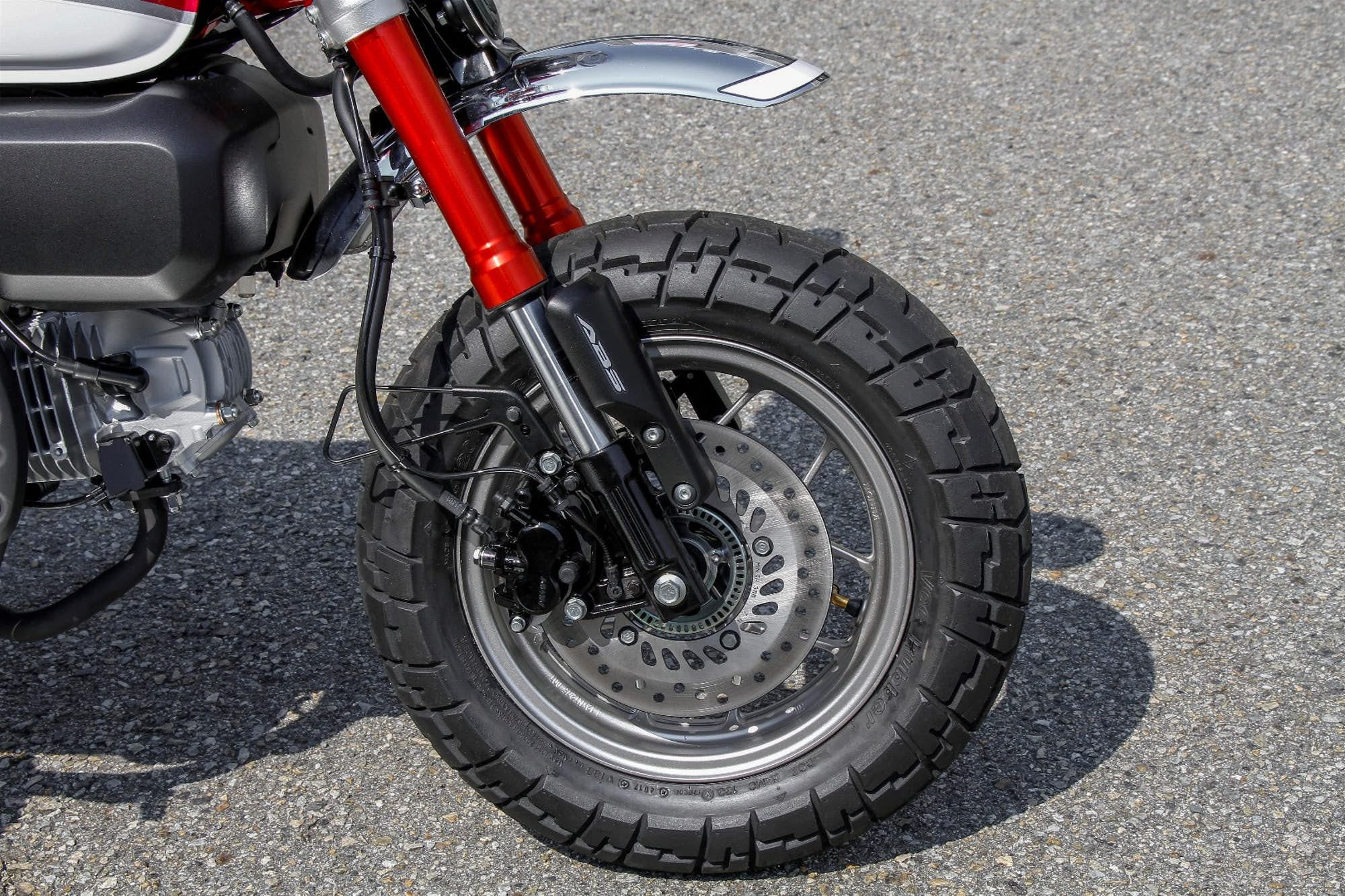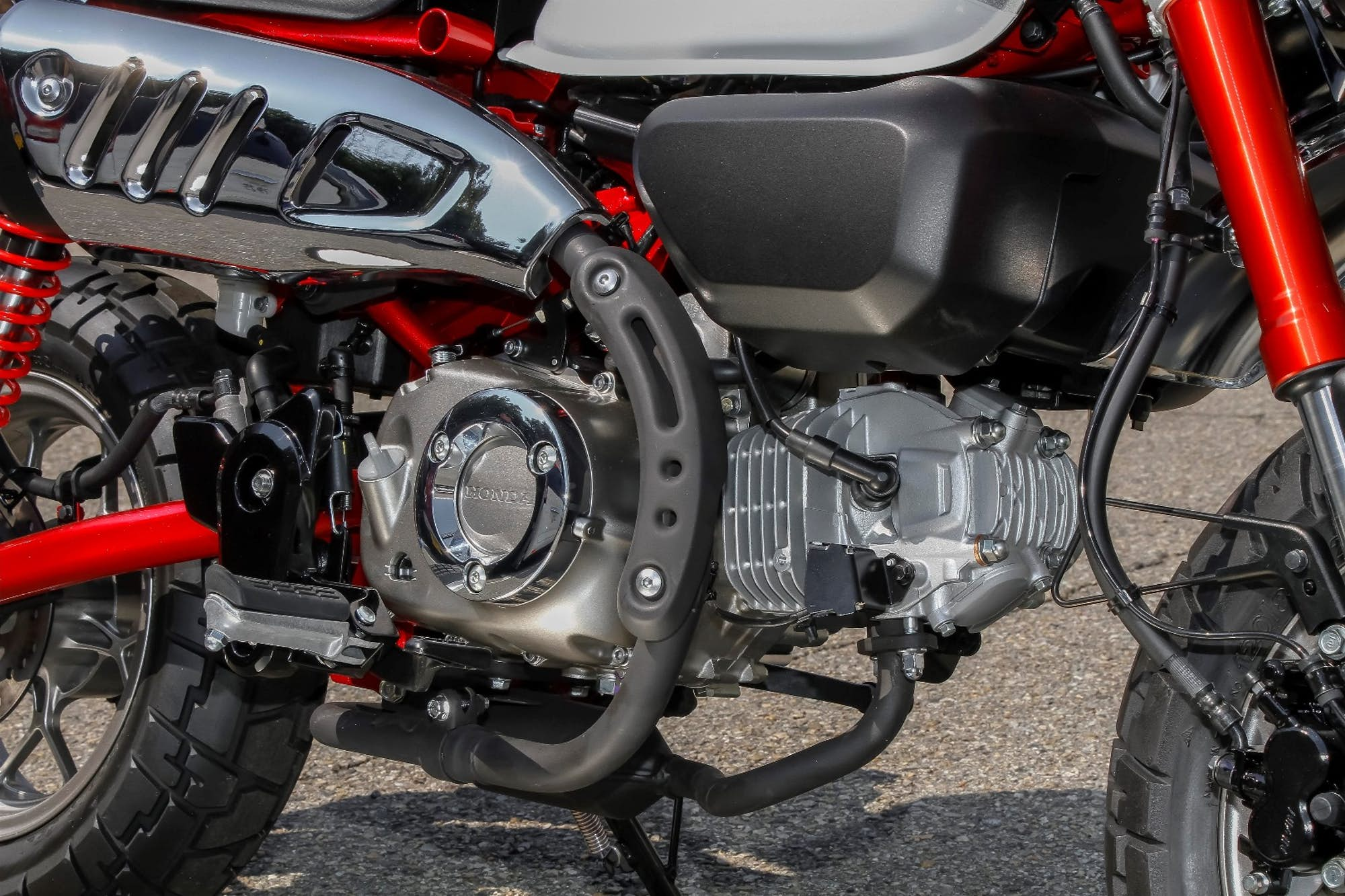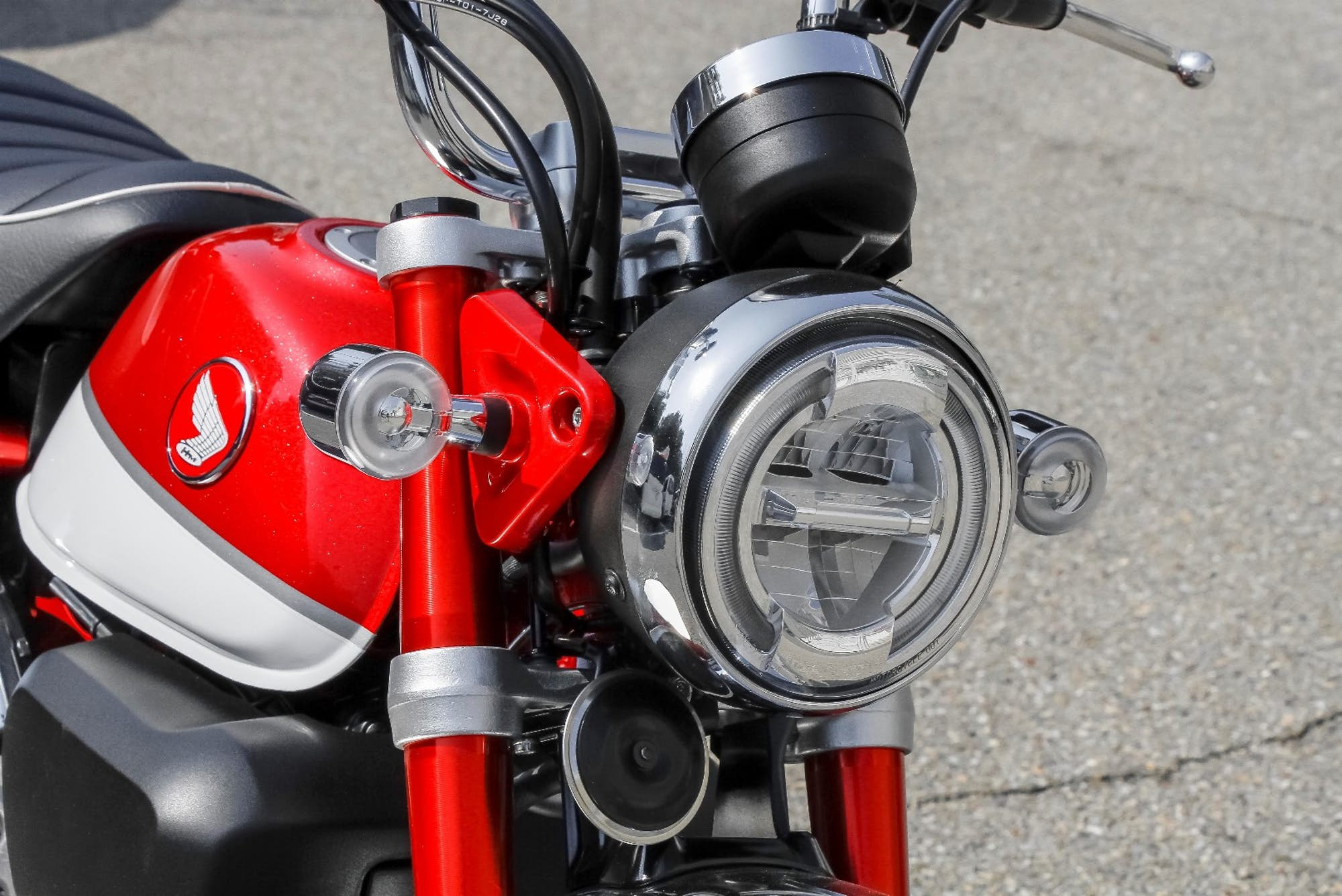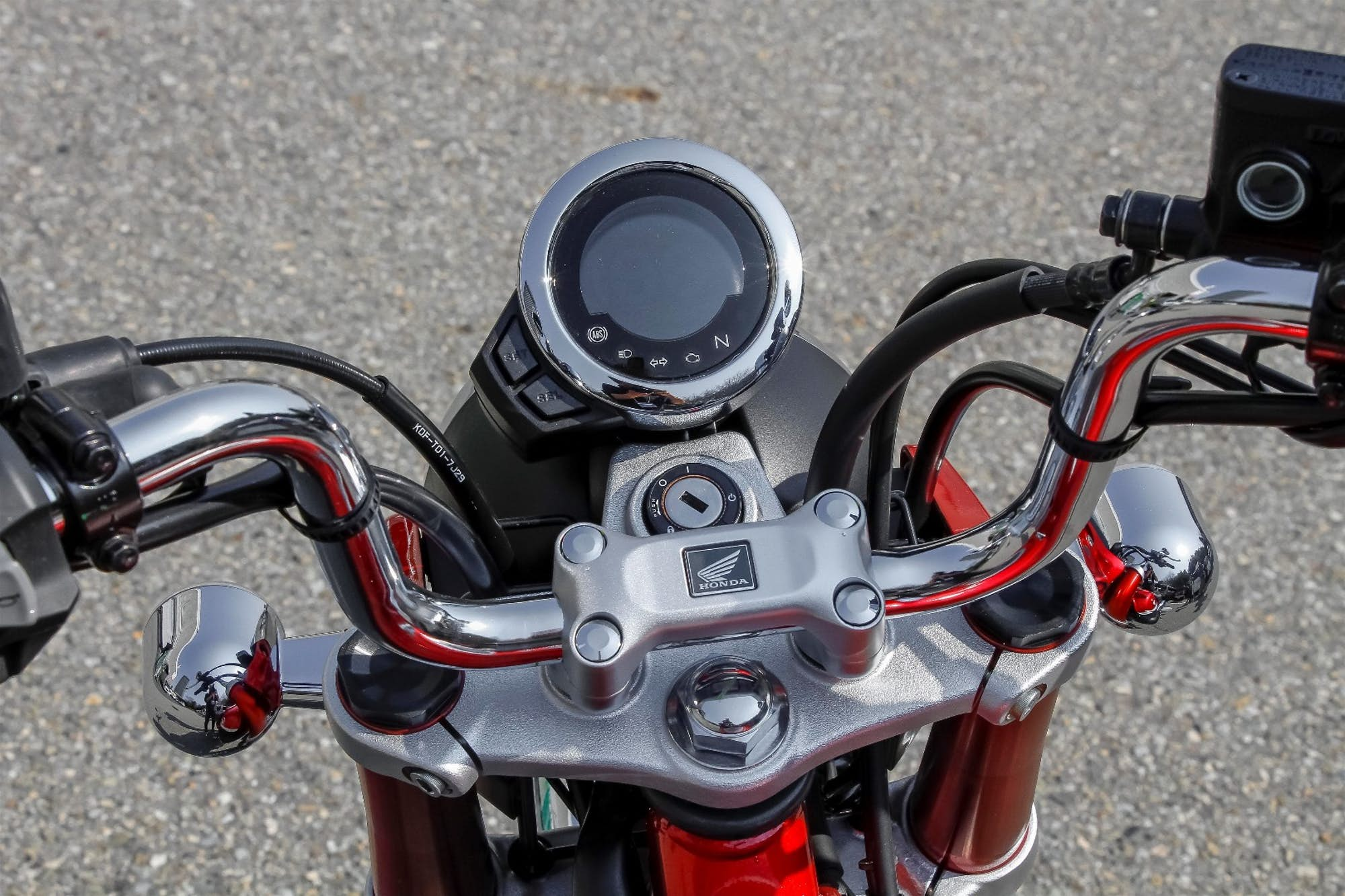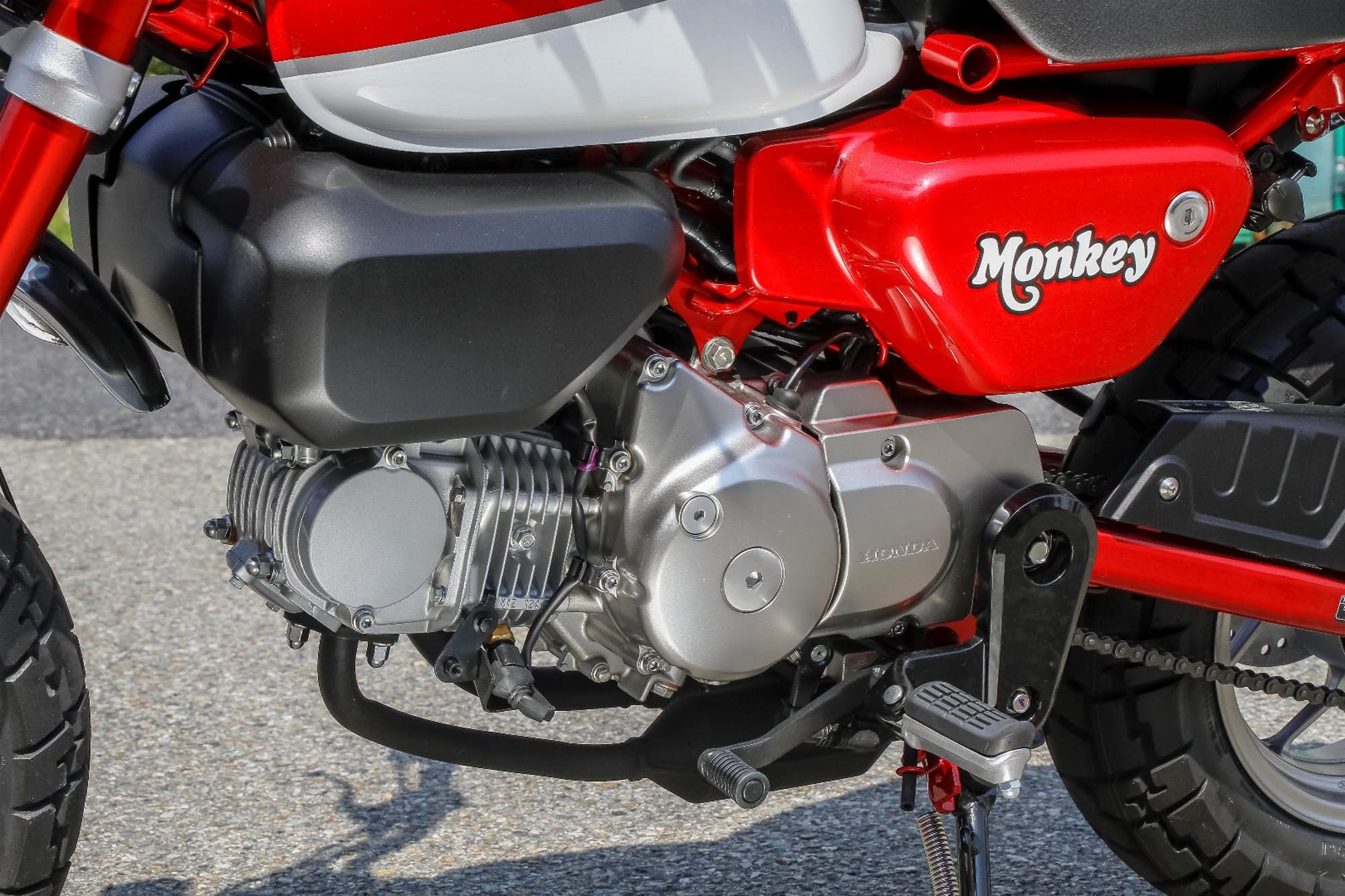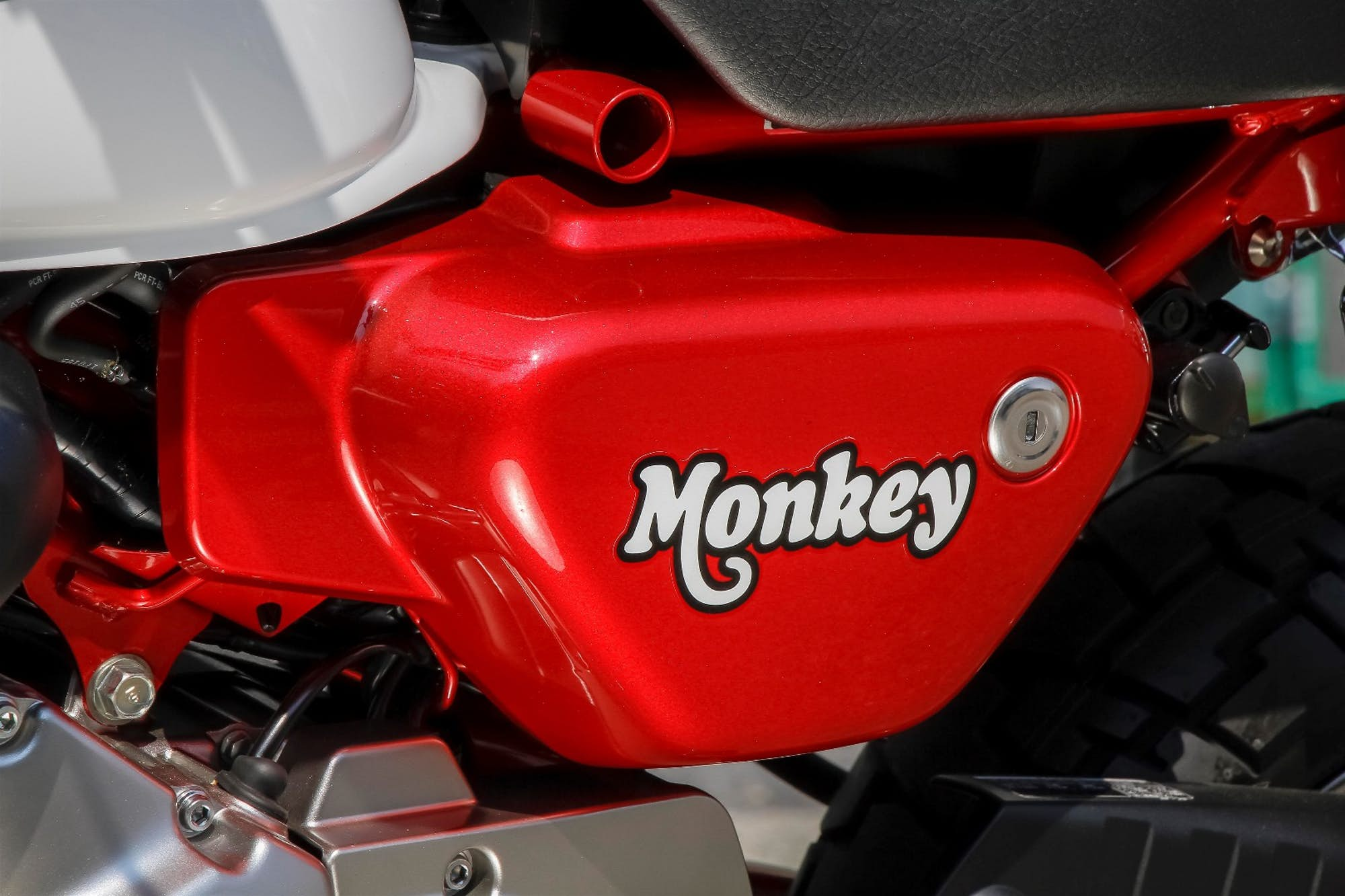Back in 1961, when Elvis couldn’t help falling in love and Patsy Cline fell to pieces, Honda built a tiny minibike for children to ride at Tokyo’s Tama Tech amusement park. The kid’s toy was called the Monkey bike. The park closed in 2009, but the Monkey lived on.
Honda put the Monkey bike into production in 1967 and tweaked design details and features over the years. Finally, in 2017, Honda took the 49cc Monkey minibike out of production, ending a 60-year run. But like the mythic phoenix, the beloved Monkey bike has returned, reborn for a new era.
The 2018 Honda Monkey 125 is still a minibike, but other than the immediate smiles the bike elicits, everything has changed. The new Monkey uses the same 125cc air-cooled, single cylinder motor as the Honda MSX125/Grom.
The Grom’s worldwide popularity likely figured significantly in Honda’s decision to resurrect the Monkey bike. Tapping the Grom’s engine and other mechanical features for the Monkey makes sense. If the mechanicals work well on a similar-size bike, why reinvent them for a new style?
And even in 2018, the Monkey bike’s toy-like style is the basis of its appeal. The original Monkey bike had no suspension and rode on 5-inch wheels, according to New Atlas. The Monkey bike was always about having fun with a small, simple two-wheeler.
The original Monkey’s 4.5 horsepower and 3-speed transmission with a centrifugal clutch made it easy to ride. The forks were detachable for ease of transport, while outsize ape-hanger handlebars added in the 1970s contributed to its ironic appeal.
The 2018 Monkey bike carries forward the iconic minibike’s style with a checklist of new features, including standard ABS, but its smile-generation capability is unchanged.
Now you can charge down the road at speeds approaching 50 miles per hour with the 9.25-horsepower engine paired with a 4-speed transmission and regular clutch. The new Monkey bike has 12-inch wheels, reverse front forks, and twin rear shocks. The tiny bike isn’t so tiny anymore. It weighs in at 236 pounds and the top of the seat is 30.5-inches off the ground.
All lights are LEDs on the 2018 Monkey, including the headlight, brake light, and turn signals. Disc brakes front and rear benefit from electronic ABS with an inertial measurement unit (IMU), which helps keep the rear wheel on the ground during hard braking.
We won’t see the 2018 Honda Monkey in the U.S. this year, but maybe in 2019. The 2018 model will be sold in Japan and Europe, according to Motorcycle.com. Color options for the 2018 two-tone minibike include Banana Yellow/Ross White, Pearl Nebula/Ross White, and Pearl Shining Black/Ross White.
